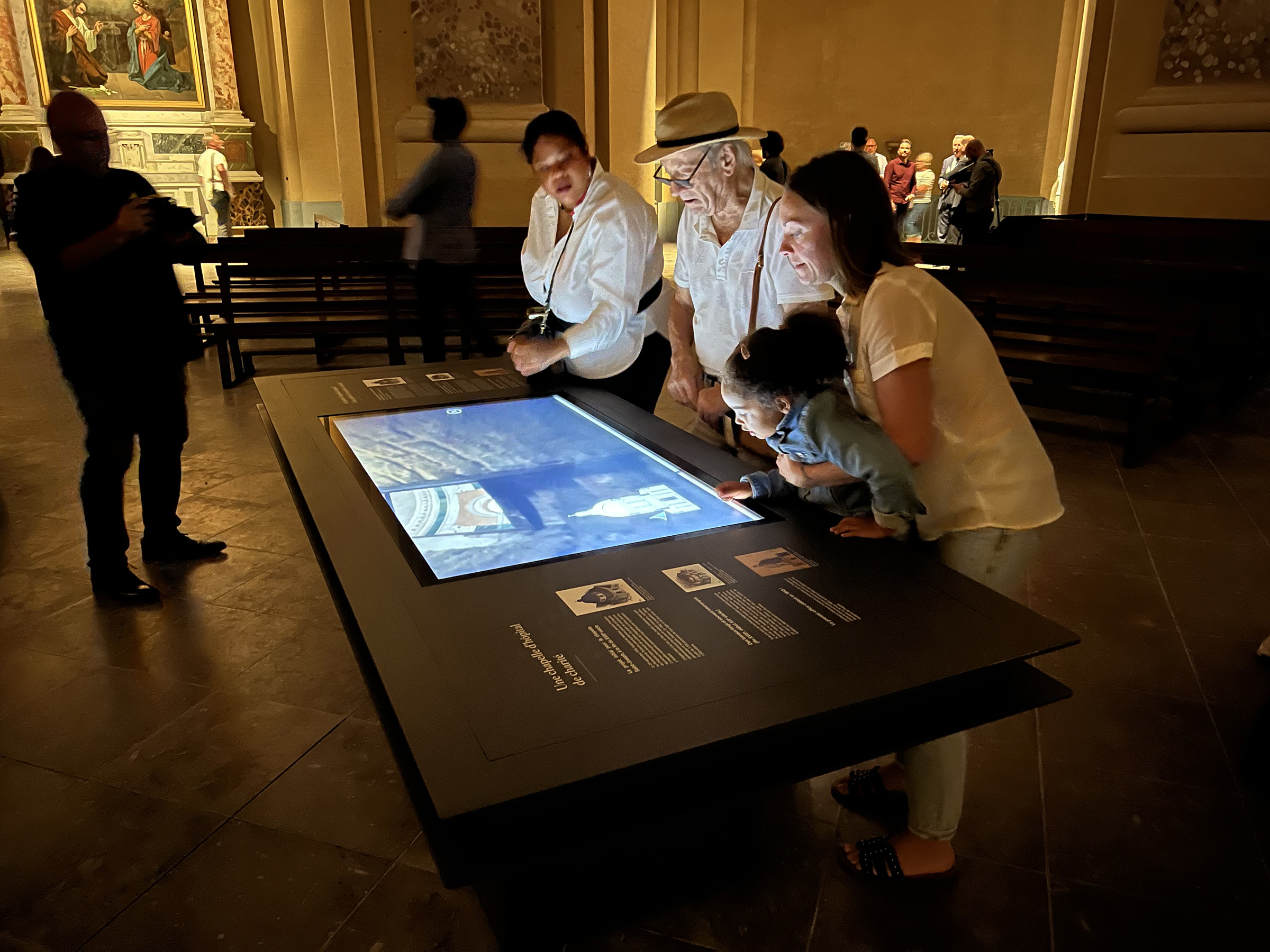We have developed, along with our friends from Mosquito and Animaviva, three tactile tables. As is our custom, these developments are based on Web technologies using the CMS SPIP.
History, evolution, and architecture
This first device, available in three languages (French, English, Spanish), is particularly rich and offers several very different interfaces:
• a vertical slider presenting the history of the hospital; a red pointer moves across the screen to indicate geographical locations;
• a 360° panoramic tour;
• a vertical slider showcasing comparable buildings;
• two video interfaces.
Testimonials and confidences
This device, available in three languages and also accessible in French Sign Language (LSF), features videos of interviews with project leaders (architect, historians, medical professors), as well as a collection of recordings of very moving testimonials from staff and residents of the old hospital neighborhood.
In 1800, during the period of the “Great confinement”
This third device presents an interactive historical map, spanning three floors, with points of interest explained.
